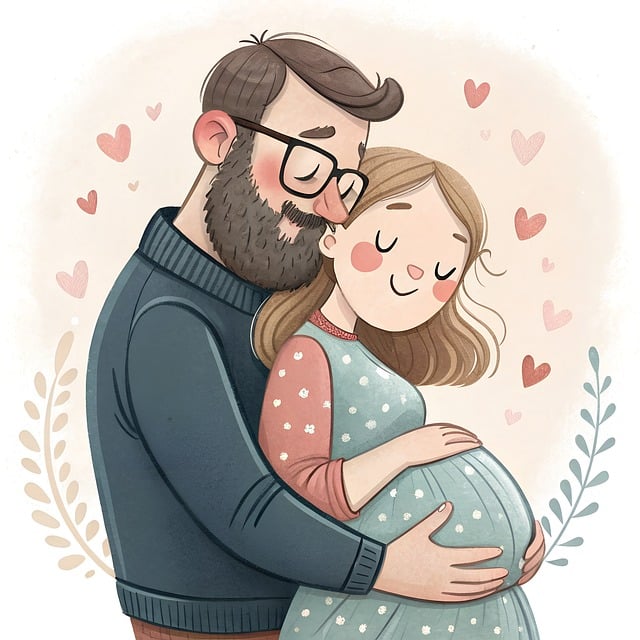When Emma and Jake first met, they instantly envisioned starting a family together. However, their path to parenthood was anything but straightforward, and Emma felt compelled to share her story to remind others facing fertility challenges that they are not alone.
What is Endometriosis?
So, what exactly is endometriosis? It’s a condition that affects about 1 in 10 women, where tissue similar to the lining of the uterus grows outside of it, often around the ovaries and fallopian tubes. For many, this can complicate fertility.
Struggles from a Young Age
Emma, now 31, started experiencing severe pain and irregular periods by the time she was 15. The pain was so intense that one day, her mom rushed her to the emergency room, suspecting appendicitis. After an emergency surgery, doctors found Emma had endometriosis rather than appendicitis. “I was so young and hadn’t even heard of endometriosis,” she recalls. “Doctors warned me my fertility could be affected, and that I should consider having kids sooner rather than later.”
Initially, Emma was prescribed the contraceptive pill to manage her symptoms. Then, unexpectedly at 18, she found out she was pregnant, welcoming her daughter Ava in 2013.
Finding Love and Facing Challenges
A few years later, Emma met Jake, and they quickly began discussing their shared dream of having children. They decided to stop using contraception, but Emma’s painful, irregular cycles returned. “I was in so much agony. It was tough to handle day-to-day activities,” she admits. They tried for a couple of years, but as friends around them began to announce pregnancies, Emma felt the weight of her struggle.
In early 2020, they finally sought medical help. After a series of tests, doctors discovered Emma not only had endometriosis but also a bicornuate uterus, which would require surgery before considering fertility treatments. “It made sense to remove the septum in my heart-shaped uterus,” she explains.
The Road to IVF
After the surgery, Emma and Jake learned that they wouldn’t receive NHS funding for IVF since they already had a child. They turned to a local fertility clinic, where tests indicated Emma had a high AMH level, suggesting potential ovulation issues. A semen analysis showed Jake was fine, so they tried intrauterine insemination (IUI), but that didn’t work out. “We were devastated. It’s hard to describe how heart-wrenching it is to keep hoping only to be let down,” Emma reflects.
In June 2021, they began their first full IVF cycle. Emma faced her fear of needles to manage the injections needed for treatment. They aimed to stimulate her ovaries carefully, and after the egg retrieval, they were excited to learn 10 healthy embryos were frozen for the future.
However, the first embryo transfer didn’t work out, leaving Emma feeling disheartened yet hopeful for the next attempt. There were delays due to some thyroid issues, but once everything was under control, they proceeded with the second transfer.
Joy and Heartbreak
After a successful transfer in December, Emma initially felt joy, only to face heartbreak just days later when she miscarried. “That was one of the toughest experiences of my life,” she admits. But by March 2022, they were ready to try again, and this time, Emma received a positive test around Mother’s Day.
Yet, tragedy struck again. Emma experienced more bleeding, and after a hospital visit, it was confirmed that she had lost the baby. “The support from the clinic was incredible, and it made a difference during those hard times,” she shares.
Determined to not give up, Emma and Jake decided to try one last IVF cycle, and this time it worked. Even though Emma faced complications throughout her pregnancy, she gave birth to their beautiful daughter, Mia, a month early. “We were just so relieved she was here,” Emma says. “The journey was long and tough, but the support from the clinic made us feel cared for.”
Opening Up About Infertility
For years, Emma faced questions from friends and family about when she’d have another baby. “It felt like people didn’t understand how difficult it was for us,” she explains. Inspired to share her experience, Emma started an Instagram account to talk about her journey. “It was easier to express myself through writing rather than face-to-face conversations,” she says.
Through sharing her story, Emma was amazed at how many others were in similar situations but felt too afraid to talk about it. “It’s incredible how many people are going through this, and if I’ve helped even one person, then it was worth it.”
For anyone navigating their own fertility journey, there are resources available, like this excellent guide on pregnancy and home insemination. And for personalized support, you can check out this blog post for valuable insights on your fertility journey.
Summary
Emma and Jake’s story highlights the challenges of infertility, especially for those with endometriosis. Their resilience and the support from their fertility clinic helped them navigate a long and emotional journey to welcome their daughter, Mia. By sharing her experiences on social media, Emma hopes to connect with others facing similar struggles and reduce the stigma surrounding infertility.

